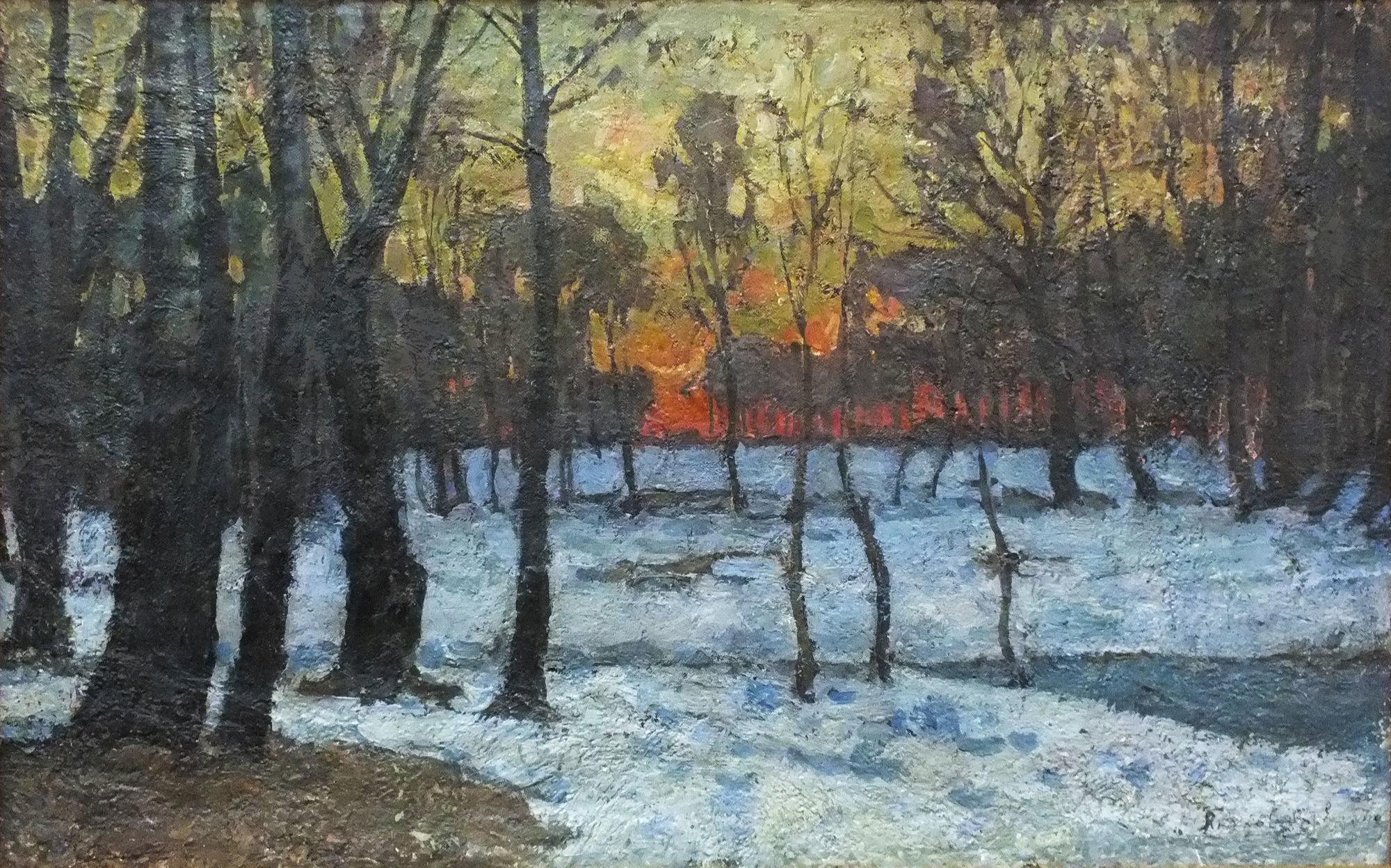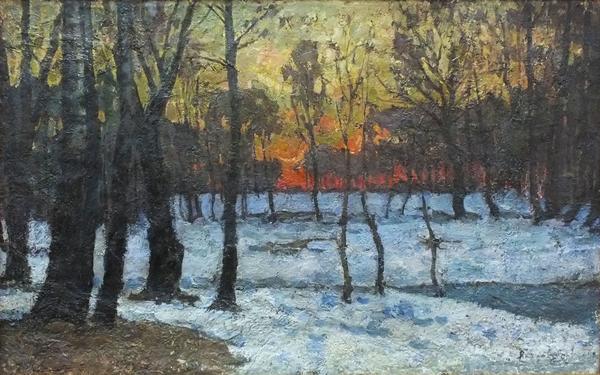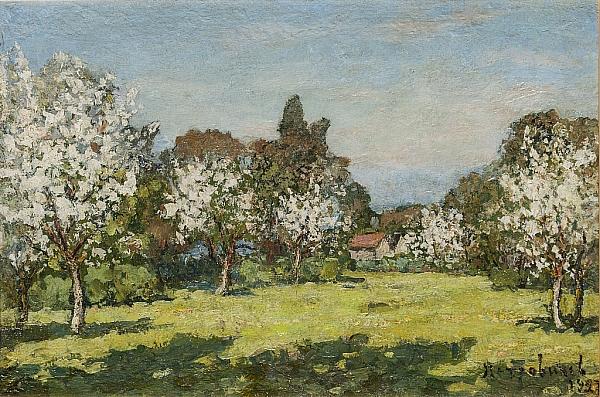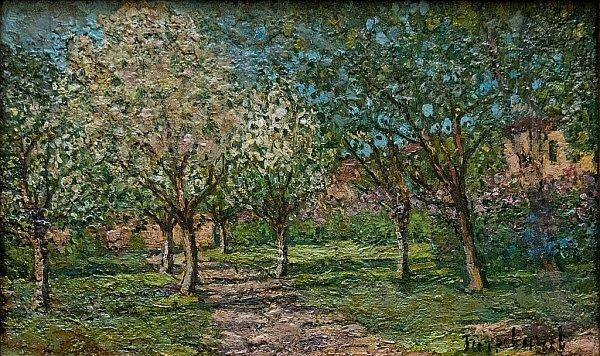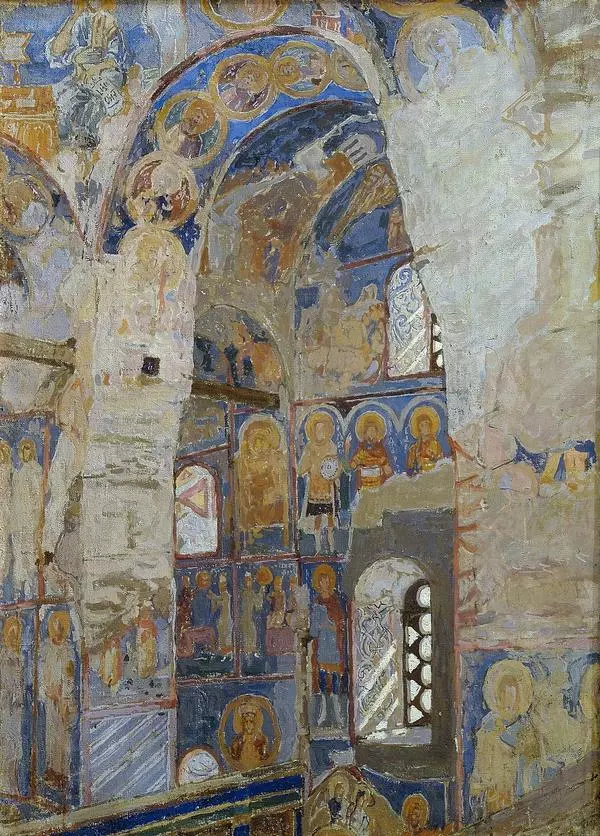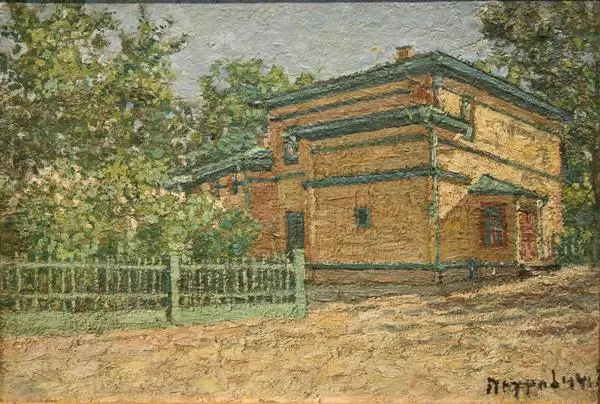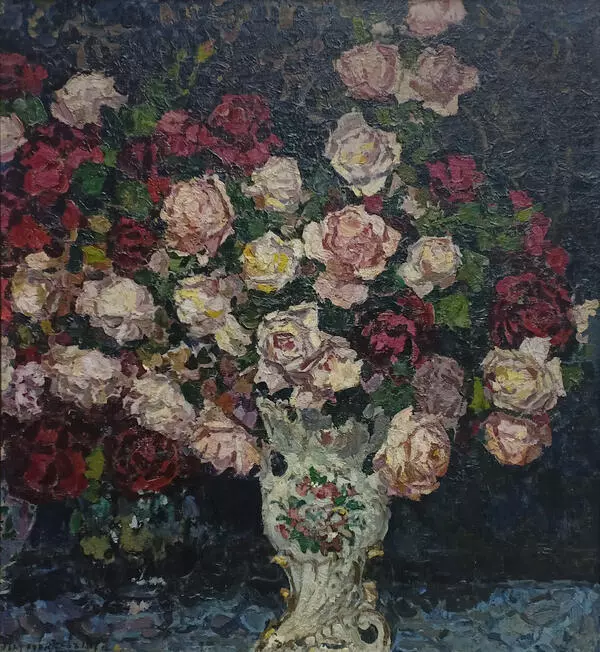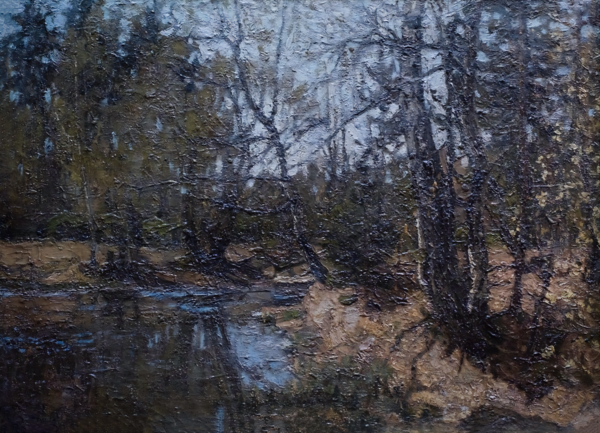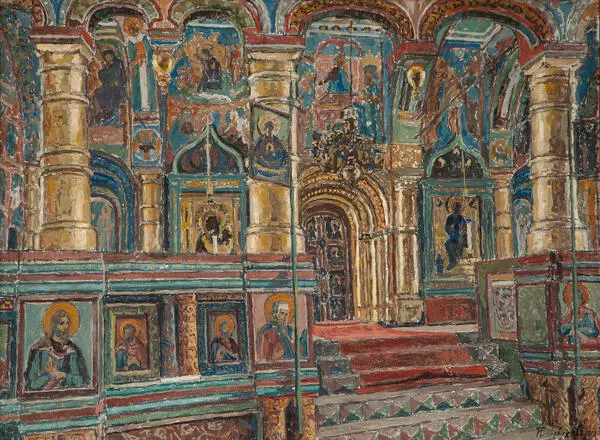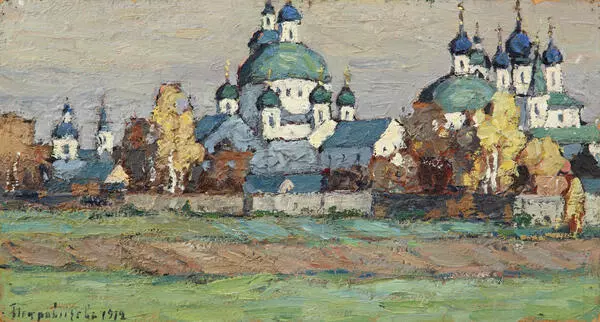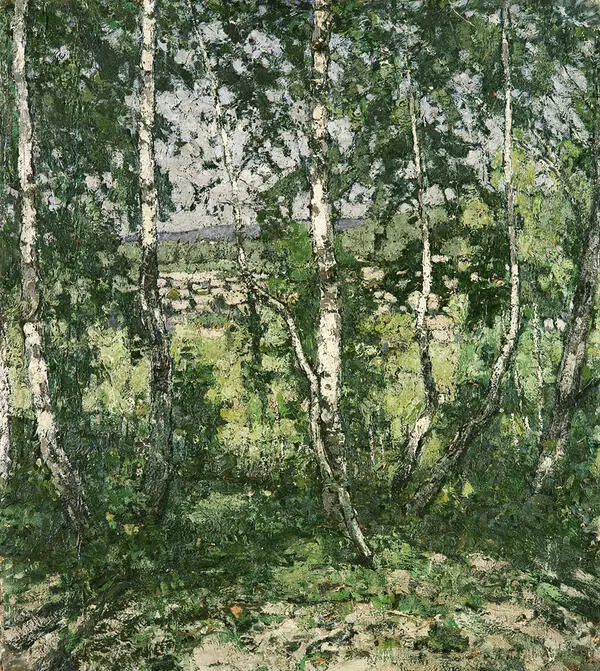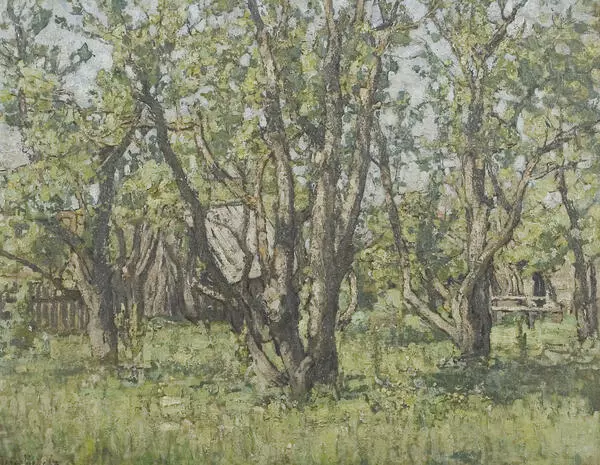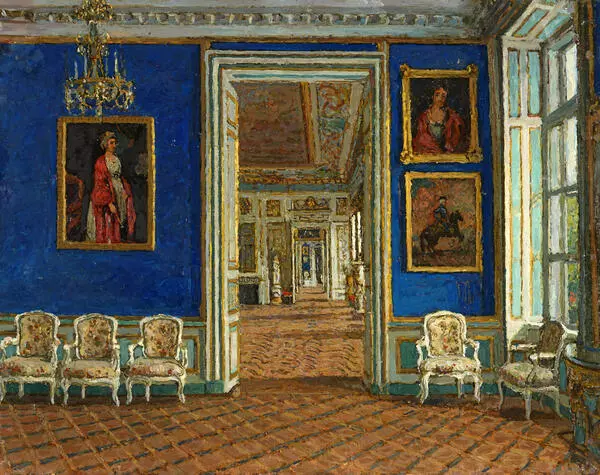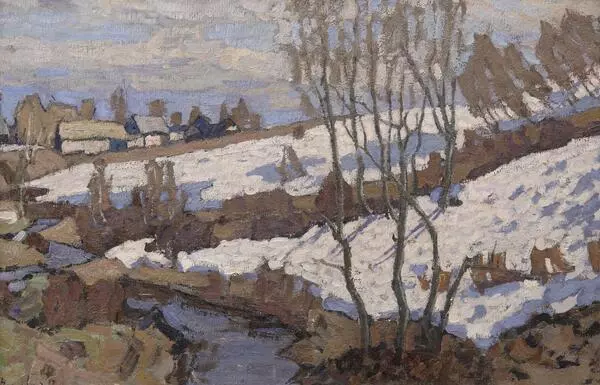It took the artist Pyotr Petrovichev a while before he found his style in art. In his youth, he, like many of his contemporaries, had a short-lived passion for French impressionism. In the training course by Valentin Serov and Isaac Levitan he was repeatedly criticized for sticking to unnatural color palette. Having eventually refused from unrealistic monotony, he turned his attention to the easily recognizable pastose technique, which became the artist’s signature technique for good.
The canvas Winter Forest depicting a sunset is painted with wide strokes densely covering the canvas, which are characteristic of Petrovichev’s favorite style. The sunset is seen against the background of snow lying on the ground and dark trunks of the trees.
Landscape is one of the favorite genres of the artist.
Apart from nature, Petrovichev often depicted objects of ancient Russian architecture in his paintings. This hobby is related to the artist’s childhood. He was born in Rostov the Great in 1874 in the family of a peasant gardener and discovered a craving for drawing at early age. He persuaded his father to help him get a position of an icon painter and restorer at the museum of church antiquities. And the early stages of becoming an artist passed in contemplation of towers and arches of the Rostov Kremlin.
He continued his studies after meeting with the famous artist Vasily Vereshchagin. One day the famous battle painter Vasily Vereshchagin was visiting the museum where Petrovichov worked, saw his works and promised to be conducive to his studies in Moscow. After entering the Moscow School of Painting, Sculpture and Architecture, Petrovichev struggled with his studies for several years. However, the arrival of Valentin Serov and Isaac Levitan at the school made the young artist passionate about painting again. And in 1901, after the death of Levitan, Petrovichev continued his studies under the guidance of the artist Apollinariy Vasnetsov. It was Vasnetsov who taught him to reveal the poetry of ancient architectural monuments in his works, which, according to the artist, had always attracted him.
After graduating from school, the artist was trying to find himself collaborating with the Moscow Society of Art Lovers as well as with the Wanderers Society and the “World of Art” until he became a member of the Union of Russian Artist in 1910. Petrovichev had finally found associates who fostered the Russian pictorial impressionism — the style found in the painting Winter Forest presented here.
In the history of art Pyotr Petrovichev will be remembered forever both as a “poet living in the images of nature” and one of the founders of the Russian architectural landscape painting.
The canvas Winter Forest depicting a sunset is painted with wide strokes densely covering the canvas, which are characteristic of Petrovichev’s favorite style. The sunset is seen against the background of snow lying on the ground and dark trunks of the trees.
Landscape is one of the favorite genres of the artist.
Apart from nature, Petrovichev often depicted objects of ancient Russian architecture in his paintings. This hobby is related to the artist’s childhood. He was born in Rostov the Great in 1874 in the family of a peasant gardener and discovered a craving for drawing at early age. He persuaded his father to help him get a position of an icon painter and restorer at the museum of church antiquities. And the early stages of becoming an artist passed in contemplation of towers and arches of the Rostov Kremlin.
He continued his studies after meeting with the famous artist Vasily Vereshchagin. One day the famous battle painter Vasily Vereshchagin was visiting the museum where Petrovichov worked, saw his works and promised to be conducive to his studies in Moscow. After entering the Moscow School of Painting, Sculpture and Architecture, Petrovichev struggled with his studies for several years. However, the arrival of Valentin Serov and Isaac Levitan at the school made the young artist passionate about painting again. And in 1901, after the death of Levitan, Petrovichev continued his studies under the guidance of the artist Apollinariy Vasnetsov. It was Vasnetsov who taught him to reveal the poetry of ancient architectural monuments in his works, which, according to the artist, had always attracted him.
After graduating from school, the artist was trying to find himself collaborating with the Moscow Society of Art Lovers as well as with the Wanderers Society and the “World of Art” until he became a member of the Union of Russian Artist in 1910. Petrovichev had finally found associates who fostered the Russian pictorial impressionism — the style found in the painting Winter Forest presented here.
In the history of art Pyotr Petrovichev will be remembered forever both as a “poet living in the images of nature” and one of the founders of the Russian architectural landscape painting.
